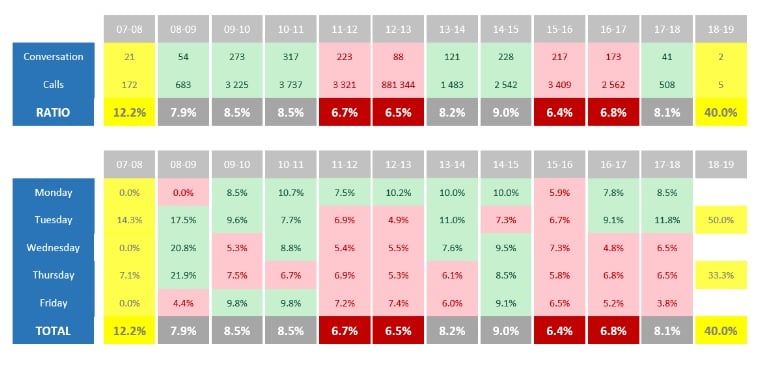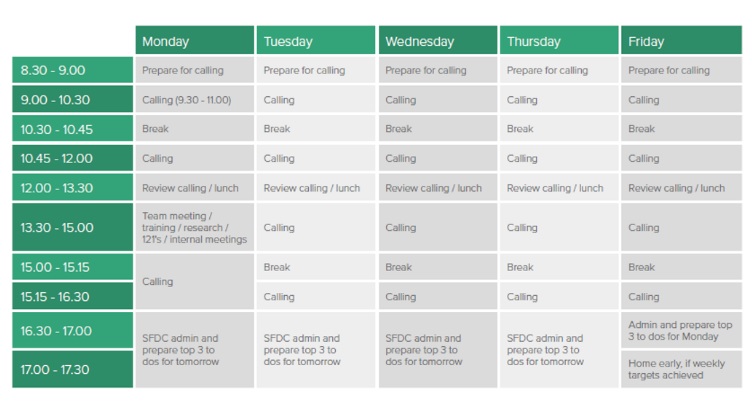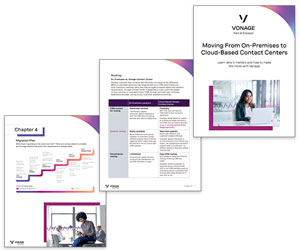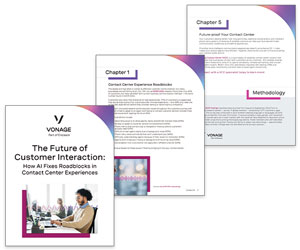Paul Turner of NewVoiceMedia shares how you can calculate the best time to make a sales call to your prospective customers.
You manage an inside sales team, or a sales development team, and you know you need to make phone calls. Whether you are closing deals, or making appointments, you need to have a conversation.
The trouble is, most of the time you get someone’s voicemail.
There are many great ways to improve your overall results – and the chance of a pick-up:
- Ensure your customer sees a “local” number when you call them
- Save time and effort by “clicking-to-dial” directly from your CRM
- Listen to your reps’ calls and coach them
- Put similar leads into a list and use an automated system to dial
There are also some not-so-good ways that may not improve results:
- Tell your reps they need to make more and more calls
- Limit break-time
- Limit time for research, so you make “cold calls”
- Use technology that over-dials, that dials more people than you have reps (often called predictive dialling and on the way out)
There is, however, one other simple but effective method that will bring amazing results without working the team harder: call at the best time.
When Is the Best Time to Call?
If you log every call in your CRM with the day/time and duration of the call, it is easy to work it out.
Assume every “long” call, perhaps calls two minutes or over, are calls where you “got through”, whereas short calls resulted in you leaving a voicemail or perhaps being asked to call back later.
Count long calls and divide by all calls and you get the chance of a conversation. Do that over all the hours in a week, with enough weeks of analysis and data to make it statistically valid, and you will get a matrix looking something like this.

You can see with this data that there are clearly good, and less good, times to call.
If you call randomly, you might get (looking at this data) an average pick-up rate of perhaps 7.5%. But if you call only in the “good times”, you should get above 10% pick-up. That is an improvement of 33%.
Taking this further, you should now be able to produce a plan for your reps to show when they should call, and when they should research, email, take training, etc.
Promise never to steal this “best time” with meetings.
Your planner could look something like this:

Going back to the 33% improvement, what does this mean? 33% more conversations, without any more effort. 33% more conversations will mean 33% more…. meetings booked?

Paul Turner
Closed sales? Opportunities? It should mean a 33% improvement to your overall business metric.
How do you do this? Start by using a solution that automates the work of logging calls in your CRM, and then focus on what you do best.
Author: Robyn Coppell
Published On: 21st Jun 2019 - Last modified: 26th Jun 2019
Read more about - Guest Blogs, Vonage



















